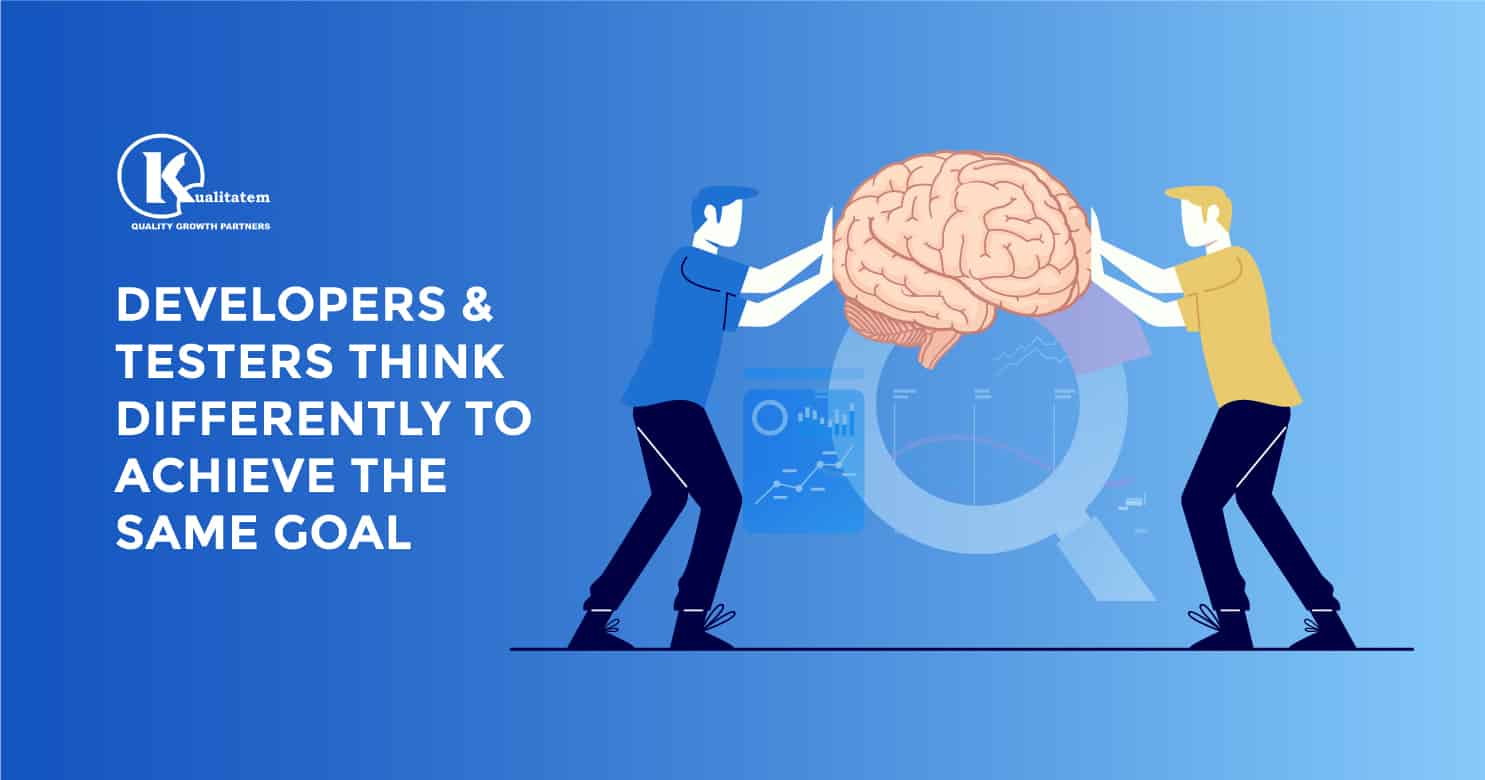Developers & Testers Think Differently to Achieve the Same Goal

- December 14, 2020
- HibaSulaiman
In this digital age, people interact with different software applications on a daily basis. Whether it is shopping, bill payments, booking tickets, or learning online, there are people who contribute their efforts to make our lives so comfortable in the digital era with these applications. While offering software testing services, developers and testers are among these technical people who strive to make a successful application together. The aim of developers and testers is the same i.e. to produce quality software solutions. But they think and act differently to achieve their goal. Although they have the same goal, yet they follow a different path to achieve it.
Here, how to break an application does not mean that tester aims at ruining the work done by a developer. But it means that the testers think like an actual customer, and apply all possible scenarios on the app. This is done in order to prevent any bugs when the application is in the live environment. Software testing plays a crucial role in a software development lifecycle (SDLC). Earlier, software testing came at the end of the development but identifying and resolving issues at the last stage of the process proved to be time-consuming and expensive. Thus, in order to avoid such complexities, software testing is made a part of each phase of the product lifecycle. This means testing begins from the very first phase of development.
Let’s have a look and get a brief idea about a tester’s and developer’s perspective at different phases of SDLC:
Requirements Gathering and Analysis:
Since this is the initial stage of a software development process, it is prepared as per the requirements of the stakeholders. It is then shared with the QA testers to get their view on the proposed requirements and send their queries in the form of ‘review comment’. These queries can include the understanding of a particular section or prediction of future possibilities of issues/bugs.
For instance, the requirement of the end-user is “No special character should be allowed in the input field”.
Developer’s Role: A developer writes a code to ensure that when a special character is entered, it displays an error message.
Tester’s Role: A QA tester will first check the requirement but he will test it for multiple scenarios, such as:
- What if the user enters only special characters in the input box?
- What if the user ‘copy-pastes’ a combination of special characters and numeric characters in the input box?
This is just an example of possible scenarios that testers can think of while reviewing the Requirements document.
Application Design:
Once the requirements are finalized, developers start designing their applications. Developers review the design document before getting started. Whereas testers use their creative thinking and expertise to analyze all the possible scenarios for all new features, enhancements, integrations, etc. that are mentioned in the requirements. They create test cases and prepare sanity checklists so that they are prepared for testing.
The Implementation Phase:
In the next phase of the software development process, developers implement the finalized system design. From a developer’s point of view, they focus on building functionality that is mentioned in the requirement. However, from a tester’s perspective, it is the exact opposite of a developer’s. Developers focus on implementing the functionality, testers test the functionality. Sometimes, developers fail to understand the requirements, and in such cases when testers apply their scenarios, they face a failure in the application.
System Testing:
In the system testing phase, developers upload the application to the QA environment with a defined set of functionalities that are implemented by the developers in the particular sprint, they give their app the testers to reverify it. However, for testers, there are many different ways to use a particular app besides the desired functionality.
Maintenance Phase:
The next phase is to check the combined effort of the developers and testers. After ensuring all implementations, the final app is sent to the user to use it live. If it working as desired then there is no issue. However, if there is any deviation, it requires the efforts of both the developers and testers in the maintenance phase. They both make an effective team as both are responsible for quality assurance. This can be achieved only when both work hand in hand with proper understanding and a positive approach.
Role of Testers and Developers:
Following are a few important points that define the role of testers and developers:
- Developers should ensure that there are no bugs in their app, the testers should make sure that if there are any bugs, those should be reported and get fixed at the right time.
- Developers should always be open to feedback from the tester and take it in a constructive manner.
- Although developers are specialists in technical aspects and they can use their skills to develop a project as per their requirements. Testers report errors or bugs in an effective manner based on which the quality of an application can be determined and they can find more areas for improvement.
Conclusion
A developer thinks about how to make an application whereas a tester finds ways to break an application. They resemble Tom and Jerry, yet they can only get a positive result if they work together towards their main goal – software quality!
Although developers and testers may use different approaches, yet these aid in finding solutions, and leads to delivering a software application that works at its best. Developers and testers are not just simply responsible for an app’s performance, but to develop and test to ensure that the best possible solution is discovered to meet the end-user expectations from a product.











